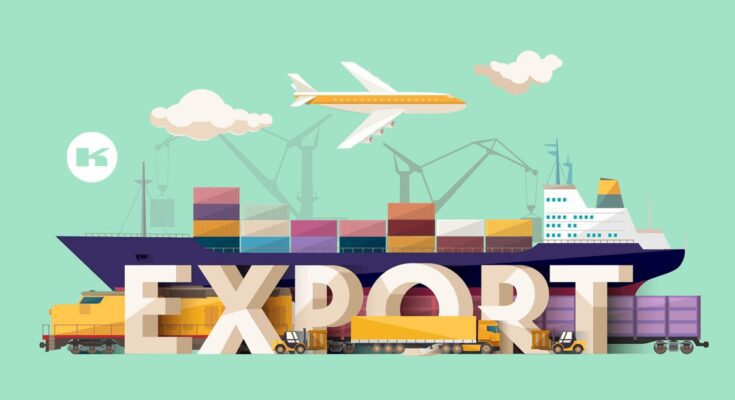India boasts a diverse array of exporters and businesses engaging in international trade through various channels, notably the burgeoning field of e-commerce exports. From leather goods and toys to clothing, jewellery, and consumables, India’s exports encompass a rich spectrum of products renowned for their authenticity and distinctive flavours.
In a concerted effort to stimulate increased export activities and extend support to businesses, the Government of India has instituted export incentives for exporters. These incentives not only bolster exporters and their enterprises but also act as a motivating force, encouraging them to actively contribute to the nation’s burgeoning export sector with a profound sense of pride.
What is the EPCG Scheme?
Under the Export Promotion Capital Goods Scheme (EPCG), exporters have the opportunity to import capital goods at a discounted customs duty rate, contingent upon fulfilling specified export obligations. To avail of this benefit, importers must obtain an EPCG licence and comply with stipulated conditions.
The primary objective of the EPCG Scheme is to facilitate the import of machinery and capital goods essential for the production of high-quality goods and services in the export trade, thereby contributing to the advancement of the country’s manufacturing industry.
The various policies and schemes designed to promote export business from India offer substantial advantages. The government’s taxation system extends several benefits to small-scale industries. The central government provides relief from direct taxes, while the state government offers sales tax, water tax, and more incentives.
Tax exemptions, financial aid, and subsidies on imported goods serve to reduce manufacturing costs and expenses associated with shipping goods abroad. This, in turn, provides exporters with a competitive edge in the global marketplace.
Moreover, these measures contribute to a reduction in the current account deficit, accompanied by an increase in foreign reserves, ultimately strengthening the country’s currency. Such developments further contribute to the overall development and progress of the nation.
Top Export Incentives for Exporters in India
Here are some top export incentives for exporters in India:
- SEIS (Service Exports from India Scheme)
SEIS encourages service exporters by offering incentives ranging from 3-7% of net foreign exchange earnings. To qualify, exporters need an active Importer-Exporter Code (IEC) with a minimum net foreign exchange earning of US$ 15,000.
- RoDTEP (Rebate of Duties & Taxes on Exported Products Scheme)
Replacing MEIS, RoD STEP provides a refund on hidden and unrefunded taxes, including central and state taxes on transportation fuel, electricity duties, and more.
- EPCG (Export Promotion Capital Goods Scheme)
EPCG allows duty-free import of capital goods used in pre-production, production, and post-production of export products, reducing capital costs.
- RoSCTL (Rebate on State & Central Taxes and Levies Scheme)
Applicable to readymade apparel and textiles, RoSCTL grants refunds on taxes like VAT, ‘mandi’ tax, and electricity duty.
- AAS (Advance Authorization Scheme)
AAS permits duty-free imports of raw materials for manufacturing final export products, reducing production costs.
- NIRVIK Scheme
NIRVIK provides high insurance coverage, reduced premiums, and simplified claim settlement for exporters, offering up to 90% coverage on principal and interest.
- EOU Scheme (Export Oriented Units)
Introduced in 1980, EOU provides waivers and concessions in compliance and taxes to companies exporting 100% of their production.
- GST Refund for Exporters
Includes schemes like LUT Bond Scheme, IGST Refund, and 1% GST benefit for merchant exporters.
- DFIA Scheme Duty-Free Import Authorization)
DFIA allows duty-free imports of raw materials, energy resources, and catalysts used in producing export products.
- DBK Scheme (Duty Drawback Scheme)
DBK provides rebates on exported products or materials, compensating exporters for applicable duties.
- DEPB Scheme (Duty Entitlement Passbook)
The DEPB scheme offers predetermined credit on the FOB value of products for all import goods except restricted items.
- IES (Interest Equalisation Scheme)
IES provides pre- and post-shipment export credit, offering 5% interest to MSME manufacturers and 3% financial support to exporters in specific tariff lines.
- MAI Scheme (Market Access Initiative)
MAI provides financial assistance for export promotion activities to various organisations and institutions involved.
- TMA Scheme (Transport and Marketing Assistance Scheme)
TMA offers financial support for transporting and marketing eligible agricultural products, benefiting exporters registered with the Export Promotion Council.
Conclusion
Navigating the dynamic landscape of India’s export promotion programs is a strategic imperative for businesses. By capitalising on a myriad of incentives, schemes, and benefits, exporters can not only enhance their competitiveness but also contribute significantly to the growth of the nation’s export sector.
Empowered with valuable insights into these programs, businesses can chart a course for sustained success in the global marketplace, fostering economic development and prosperity.



